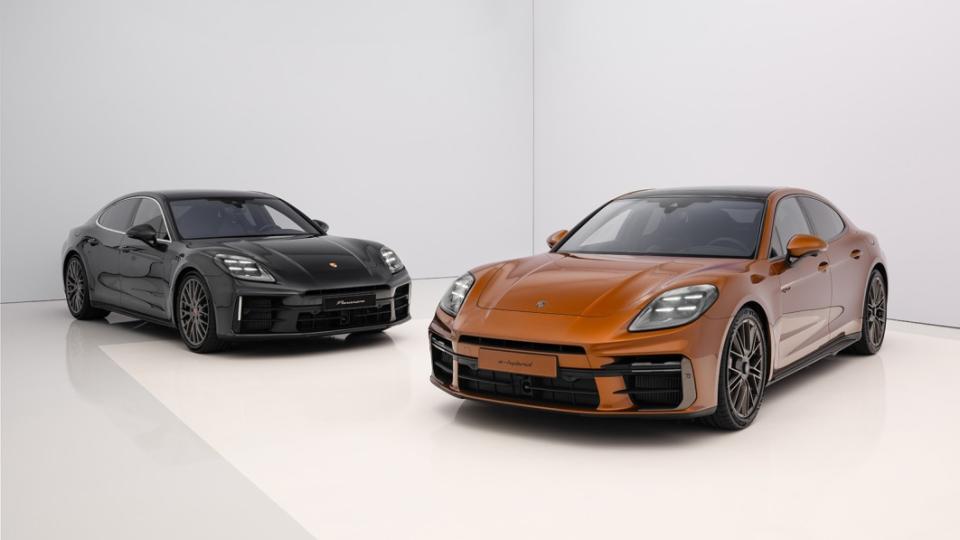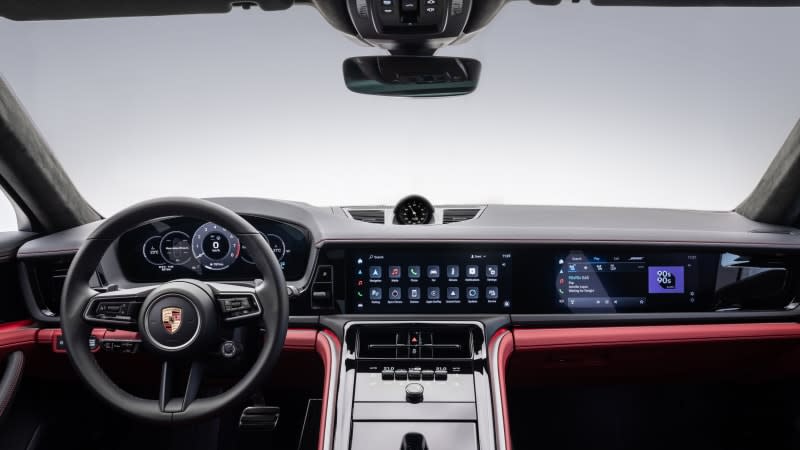2024 Porsche Panamera unveiled with new drivetrains and trick hydraulic suspension

LEIPZIG, Germany — The third-generation Porsche Panamera made its debut online, and Autoblog went to Germany to get a sneak preview of the sedan before its unveiling. While it looks a lot like the second-generation model, it benefits from a long list of mechanical, chassis, and interior changes.
Visually, the changes made to the third-generation Panamera are largely evolutionary — did you expect anything else from Porsche? While the new car looks a lot like its predecessor, it's not a simple nip-and-tuck and the firm stresses there's more going on than meets the eye.
"The basis of the chassis is the same. The wheelbase is the same. It's part of our strategy to make a chassis platform which lasts for two generations. However, we had to change a lot of things in the platform because of new requirements, such as crash-test requirements. So, it's not exactly the same platform. There are a lot of carry-over parts but there are also a lot of new parts. We wanted to increase stiffness, and we needed to [accommodate] crash requirements worldwide," Dr. Thomas Friemuth, the Panamera line's vice president, told me.
Up front, designers gave the front bumper a new look, fitted more angular headlights, and made the fenders taller. Out back, the hatch's window loses its metal frame and the light bar remains but it features an updated design. Turbo models receive the new Turbonite finish announced earlier in 2023, and center-locking wheels appear on the Panamera's list of options for the first time since its introduction in 2009.
Porsche pared down the range to two body styles: the standard Panamera and the long-wheelbase, Executive-badged variant. That's it; the Sport Turismo station wagon isn't making a comeback. Friemuth explained that global sales were much too low to justify keeping it around.
We've already seen the new Panamera's interior, which features a layout referred to as the Porsche Driver Experience. If you're familiar with recent additions to the brand's range, like the new Cayenne, you'll feel right at home in the third-generation Panamera. From the driver's seat, you face a 12.6-inch curved instrument cluster that doesn't have a binnacle. The switch to start and stop the engine has been replaced by a button (though it's still on the left side of the steering wheel), and a razor-shaped shifter clears space on the center console. Another first is the availability of an optional 10.9-inch touchscreen embedded into the part of the dashboard that's ahead of the front passenger.
At launch, buyers will have three trims called Panamera, Panamera 4, and Panamera Turbo E-Hybrid, respectively, to choose from. The first two use a 2.9-liter turbocharged V6 rated at 348 horsepower and 368 pound-feet of torque, increases of 23 and 37, respectively, over the six-cylinder found in the last-generation model. Porsche quotes a zero-to-60-mph time of 5.0 seconds for the rear-wheel-drive model and a top speed of 169 mph, while the all-wheel-drive Panamera 4 takes 4.7 seconds to reach 60 mph but loses one mile per hour at the top end.
New for 2024, the Turbo E-Hybrid model gets a gasoline-electric plug-in hybrid drivetrain that consists of an updated version of the outgoing car's 4.0-liter twin-turbocharged V8, an electric motor integrated into the eight-speed dual-clutch automatic transmission, and a 25.9-kilowatt-hour battery pack. This drivetrain is rated at 670 horsepower and 685 pound-feet of torque, and it benefits from the numerous lessons that Porsche has learned from building hybrid Panamera models for over a decade, like a new electric motor cooled by the transmission's fluid.

 Yahoo Autos
Yahoo Autos 

